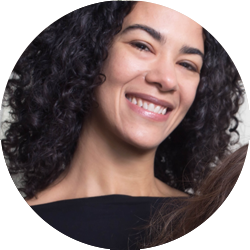Go camping in the mountains for a week, with no artificial light, and your sleep schedule will shift to align with sunset and sunrise—whether you’re a lark or an owl.
That’s because bright light is our body’s strongest cue for when to wake and when to sleep. Natural light is four times brighter than electrical light.
But dim light cues our bodies, too. Even the 30-50 lux of light from a smartphone, tablet, or laptop is enough to reduce levels of melatonin, the sleep hormone. (Technically, melatonin suppresses our brain’s arousal systems late in the day—it alone doesn’t make us sleepy.)
And oh, how we’re pumping our brains with light at night. A new study of 1,200 adults shows that 50% of us use our cell phones and 38% of us use our computers in bed when we should be sleeping. (Ahem. Good thing for me there’s only one more episode of Game of Thrones.)
That shifts our body clock slightly later the next day … and the next day, and the next day. For example, people who read an e-book for four hours before bed pushed back their internal clock by an hour and a half the next night.
If we then sleep in, we miss out on some of the day’s bright light that would shift our clocks back. If we don’t sleep in, we don’t get enough sleep. We feel groggy in the morning because our melatonin, on the shifted schedule, is still high.
How about for kids? Before puberty, kids are even more susceptible to low levels of light suppressing their melatonin. And natural light and darkness are critical for helping infants organize their random sleep patterns into day and night. (See my book, Zero to Five: 70 Essential Tips Based on Science, for more on infant sleep—and guarding your own sleep as a new parent.)
Do it now: Stash the screens at night—starting at dusk. Really darken the room for sleeping. During the day, make it a point to get outside (or near big windows). If your child is in childcare or preschool, look for a school that values time outdoors.
When is it best to hit the lights—and the caffeine? When you actually want to adjust your internal clock, for, say, a different time zone. (Caffeine for you, of course, not for your kids.)
–From sessions by Kenneth Wright and Mary Carskadon at the SLEEP 2015 conference.
| Lux comparisons | |
|---|---|
| Illuminance | Surfaces illuminated by: |
| 0.0001 lux | Moonless, overcast night sky (starlight)[3] |
| 0.002 lux | Moonless clear night sky with airglow[3] |
| 0.27–1.0 lux | Full moon on a clear night[3][4] |
| 3.4 lux | Dark limit of civil twilight under a clear sky[5] |
| 50 lux | Family living room lights (Australia, 1998)[6] |
| 80 lux | Office building hallway/toilet lighting[7][8] |
| 100 lux | Very dark overcast day[3] |
| 320–500 lux | Office lighting[6][9][10][11] |
| 400 lux | Sunrise or sunset on a clear day. |
| 1000 lux | Overcast day;[3] typical TV studio lighting |
| 10000–25000 lux | Full daylight (not direct sun)[3] |
| 32000–100000 lux | Direct sunlight |
Written by
Tracy Cutchlow
Tracy is the author of the international bestseller Zero to Five: 70 Essential Parenting Tips Based on Science, a public speaker, and a creator of places to speak and be heard. Sign up for her newsletter here.

